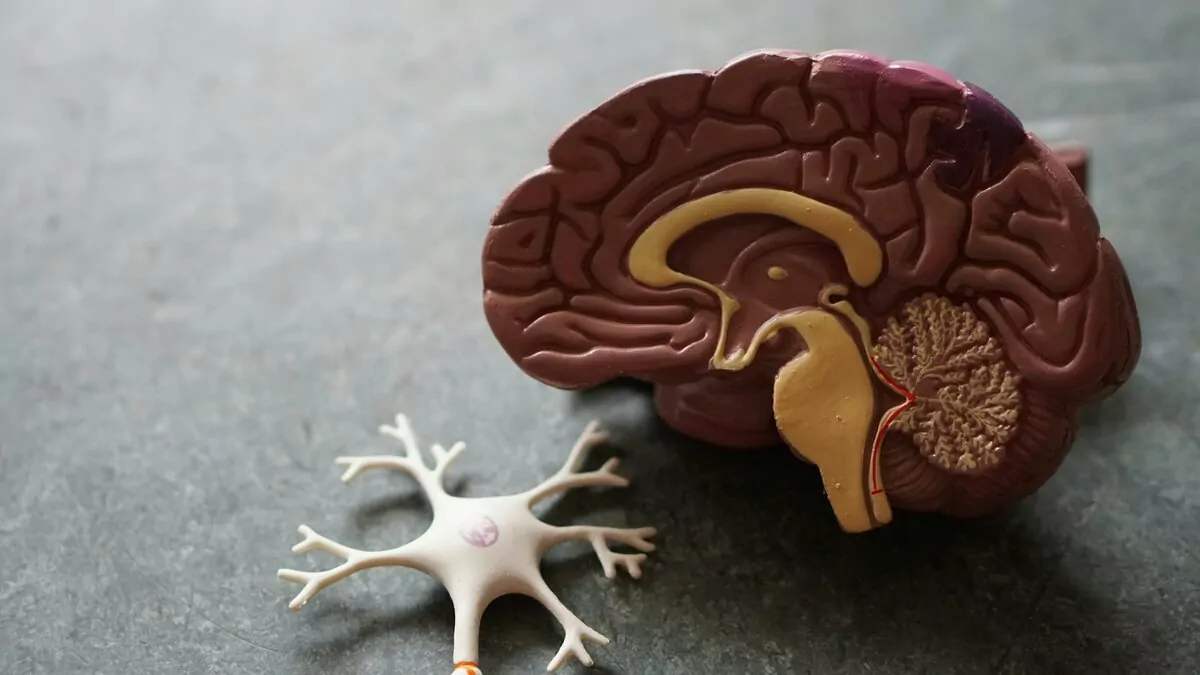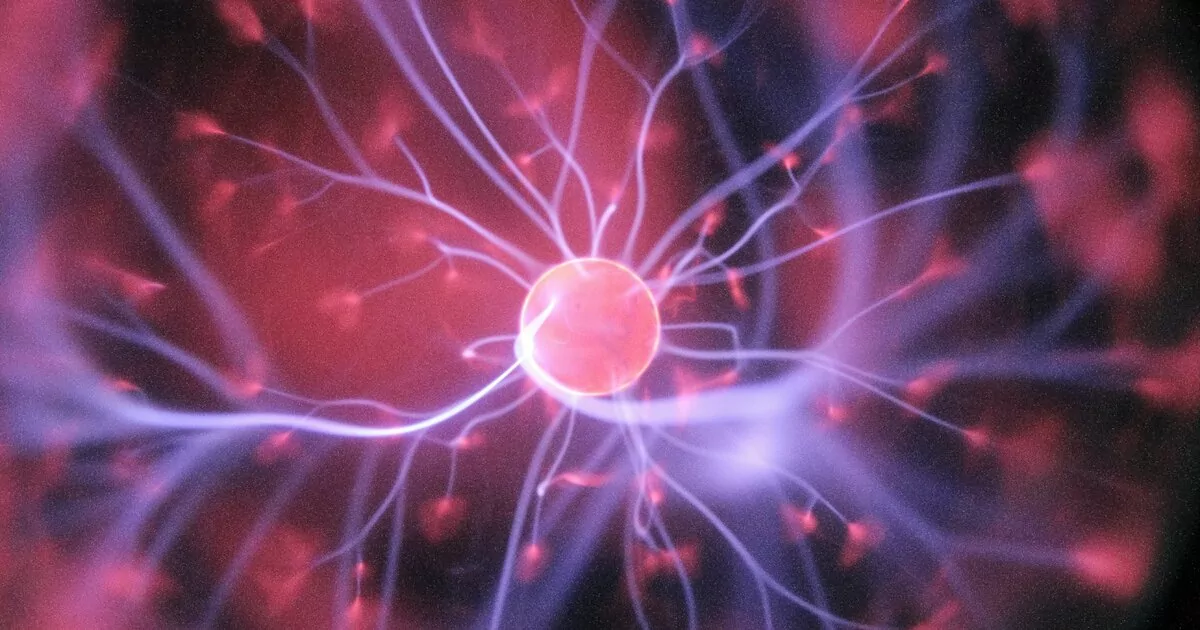Just like a bustling city depends on power to keep the lights on and machines humming, your brain needs electrical signals to function correctly. Sometimes, these signals can cross wires and create a ‘short circuit,’ disrupting the usual brain activity. This glitch can lead to various symptoms and is often associated with conditions like epilepsy. Understanding how and why these short circuit brain occurrences happen is the first step in addressing them and keeping your brain’s intricate electrical system running smoothly.
On this page:
Recognizing the Symptoms of Neural Misfires
Your brain, like any super-computer, sometimes experiences glitches. These ‘neural misfires’ can cause a range of symptoms that might be hard to notice at first. It’s like your brain sends out a message and somewhere along the line, the wires get crossed.
Imagine you’re walking across your living room and suddenly, without warning, you can’t remember why you got up in the first place. Or maybe you’re in the middle of a conversation, and you just blank out for a few seconds. These little hiccups might seem like nothing, but they could be subtle signs of a neural misfire.
Some people might notice a brief spell of dizziness or a sensation of déjà vu that comes out of nowhere. Others might have a strange taste in their mouth or a sudden wave of emotion that doesn’t match the situation. These symptoms are fleeting, and they might not happen often, which makes them easy to brush off. But paying attention to them is important.
In some cases, these symptoms can be more pronounced. You could have muscle twitches or jerks that you just can’t control. Your speech might get a bit garbled, or you might find yourself staring off into space, not quite connected to the world around you for a short time.
It’s not just about the physical stuff, either. Your thoughts can be affected too. You might find your concentration slipping, or you may get easily confused with tasks that used to be a breeze.
These symptoms can be sneaky and they’re not the same for everyone. Some people might only have one or two of these signs, while others might experience several. The key is to tune into your body and notice when something feels off. These little clues can be your first hint that something’s up with the electrical activity in your noggin.
Understanding Epilepsy as a Form of Brain Short Circuiting
Epilepsy is often described as an electrical storm in the brain, a fitting analogy when we’re talking about brain short circuits. This condition is characterized by sudden, uncontrolled electrical disturbances in the brain that can lead to seizures. The link between epilepsy and these brain short circuits lies in the brain’s complex wiring.

Neurons, the cells that make up the brain, communicate with each other through electrical signals. In a healthy brain, this electrical activity is orderly and coordinated. However, in someone with epilepsy, this electrical activity can become unpredictable and chaotic. Imagine a city’s power grid suddenly sending out uncontrolled surges of electricity to different areas – this is similar to what happens in the brain during a seizure.
During a seizure, a group of neurons fires excessively and abnormally, which can disrupt normal brain function. This surge can lead to various symptoms, depending on which part of the brain is involved. For example, if the short circuit occurs in the part of the brain that controls movement, it might cause muscle spasms. If it happens in a part that affects sensation, it could lead to strange sensations like tingling or flashing lights.
The reason why these brain short circuits lead to epilepsy isn’t always clear. For some, it could be due to genetics, while for others, it might result from a brain injury or an illness that affects the brain. What’s certain is that when the brain’s natural electrical rhythm gets thrown off, it can lead to the repeated episodes that characterize epilepsy.
Neurological Conditions Mimicking Brain Short Circuits
One such condition is multiple sclerosis (MS), where the immune system mistakenly attacks the protective myelin sheath covering nerve fibers, disrupting communication between the brain and the body. This can result in symptoms that resemble the ‘misfiring’ often associated with brain short circuits, such as numbness, weakness, or coordination problems.
Another condition, transient ischemic attacks (TIAs), often called “mini-strokes,” can also mimic brain short circuits. TIAs are brief episodes of neurological dysfunction caused by a temporary shortage of blood supply to the brain. Symptoms can include sudden confusion, difficulty speaking, and a loss of balance, which may seem like a neural misfire but are actually signs of a more serious vascular issue.
Migraines are notorious for causing neurological disturbances that could be mistaken for brain short circuits. They can produce visual auras, dizziness, and sensory changes that are actually due to abnormal brain activity during a migraine episode, not a short circuit per se.
There’s a condition called functional neurological disorder (FND), which involves symptoms that appear neurological but are not linked to a structural defect or disease. FND can cause a range of issues, including seizures that aren’t caused by epilepsy, unexplained movements, or speech problems, all of which could be confused with the concept of a brain short circuit.
Misconceptions About Brain Short Circuits
The brain isn’t a mass of wires like in your electronic gadgets; it’s a complex organ made up of neurons that communicate through electrical and chemical signals. So, when someone mentions a brain short circuit, they’re often referring to a disruption in this normal communication flow, not literal wires crossing or fraying.
Many people think a brain short circuit means permanent damage, but that’s not always true. While certain conditions can cause lasting effects, many times the brain can bounce back. Think of it like a temporary glitch in your computer—it might freeze or crash, but often, it can restart and run normally again.
Another misconception is that if you have one of these so-called short circuits, like a seizure, you must have epilepsy. This isn’t the case. Seizures can have many triggers and don’t necessarily mean you have a chronic condition. Stress, fever, or even a lack of sleep can set one off without signaling a deeper issue.
It’s also widely believed that brain short circuits are always dramatic, obvious events. But Sometimes, the signs of brain short circuiting can be subtle—a brief moment of confusion or a small memory lapse that’s easy to shrug off.
Don’t fall for the myth that brain short circuits are untreatable. Today, doctors have many ways to help manage these disruptions and improve brain health, which can reduce the chances of them happening.
Innovative Approaches to Managing Brain Short Circuit
One such method is neurofeedback, a type of biofeedback that uses real-time displays of brain activity—typically through EEG—to teach self-regulation of brain functions. By observing their brainwave patterns, individuals can learn to control and adjust them, potentially reducing the frequency and severity of short circuits.

Another cutting-edge technique is transcranial magnetic stimulation (TMS), which uses magnetic fields to stimulate nerve cells in the brain. It’s non-invasive and can target specific brain areas that might be involved in these short circuits. TMS has shown promise particularly in depression treatment, and researchers are exploring its effects on other neurological issues that involve brain misfiring.
Cognitive-behavioral therapy (CBT) is also playing a role in managing brain short circuits. While traditionally used for mental health treatment, CBT can help individuals develop coping strategies and change patterns of thinking that might contribute to or exacerbate their neurological symptoms.
Advances in personalized medicine are paving the way for more targeted treatments. This approach involves genetic testing and detailed analysis of an individual’s brain patterns to create customized treatment plans. It’s a growing field and holds the potential to revolutionize how brain short circuits are managed by tailoring interventions to each person’s unique neural landscape.
Lifestyle Adjustments for Optimal Brain Health
Eating healthy plays a big role; fill your plate with foods rich in omega-3 fatty acids, antioxidants, and vitamins. Think of fish, nuts, berries, and leafy greens as brain food. Staying hydrated is key, too—water is essential for delivering nutrients to the brain and removing toxins.
Getting enough sleep is another major factor. Your brain needs those zzz’s to repair itself and consolidate memories. Aim for 7-9 hours a night, and try to keep a regular sleep schedule.
Exercise isn’t just for your muscles; it boosts brain health as well. Physical activity increases blood flow to the brain and can improve cognitive function. Even a brisk walk every day can make a difference.
Stress management is also crucial. High stress can mess with your brain’s functions, so finding ways to relax is important. This could be as simple as deep breathing, yoga, or enjoying a hobby.
Keep your brain challenged. Learning new skills, reading, or playing strategy games can keep your brain sharp and prevent cognitive decline.
When to Seek Professional Help for a Short Circuit Brain
Sometimes, the signs your brain might not be firing on all cylinders can sneak up on you. Maybe you’ve noticed more frequent memory lapses, or headaches have become a regular part of your day. Sudden mood swings, changes in your senses, or trouble speaking could be happening more often. It’s not just about the occasional brain fog or forgetting where you left your keys. When these symptoms persist, or they come on strong and out of the blue, it’s time to take action.
Reach out to a healthcare professional if your experiences start to mess with your day-to-day life. If you’re finding it tough to keep up at school or work, or your relationships are taking a hit, these are red flags. It’s especially important to get help if you have a seizure for the first time. Seizures can feel super intense and scary, and they’re a clear sign that you need to check in with a doctor.
Even if what you’re going through seems minor, like a bit of dizziness or a headache that won’t quit, it’s better to be safe. A quick visit to your doctor can help figure out what’s going on. They might do some tests or refer you to a specialist, like a neurologist, who knows all about the brain and its wiring.
Getting help isn’t just about tackling what’s happening now. It’s also about keeping you healthy down the line. Your brain is the boss of your body. Keeping it in tip-top shape means you can stay on top of your game. So, don’t brush off those weird symptoms. Listen to your body, and let the pros help keep your brain’s circuits in good working order.
Preventing Brain Short Circuits Through Early Intervention
Think of it like this: if you spot a small leak in a pipe early, you can fix it before it bursts and causes a big mess. Similarly, with our brains, early actions can prevent bigger issues later on.
So, how do you step in early? Well, it all starts with paying attention to how you or your loved ones are feeling and acting. If you notice changes like sudden confusion, difficulty speaking, or unusual movements, it’s a good idea to chat with a doctor. They can check things out and see if there’s a need to take a closer look at what’s happening in the brain.
The trick is not to wait around. Quick action can make a huge difference. For children, this could mean getting extra help at school or working with a specialist if they’re having a tough time with learning or behavior. Adults might need to manage stress better, get more sleep, or change what they eat. Taking care of your brain by keeping your body healthy is also super important. Regular exercise, eating foods that are good for your brain, like fish and nuts, and making sure you’re not overdoing it with alcohol can all help your brain work better.
Moving Forward After a Brain Short Circuit Diagnosis
Living with a brain short circuit diagnosis can understandably feel overwhelming. But it’s important to remember that this isn’t an end point—it’s a new chapter that opens up avenues for management and adaptation. With the right strategies and support, many individuals find ways to thrive. Adjusting daily routines, staying informed about condition-specific interventions, and maintaining open communication with healthcare providers are all key steps in this journey. It’s also crucial to lean on your community—whether that’s friends, family, or support groups—to navigate this path. Moving forward is about taking small, steady steps toward a life that, while different, can still be full of joy and fulfillment.
